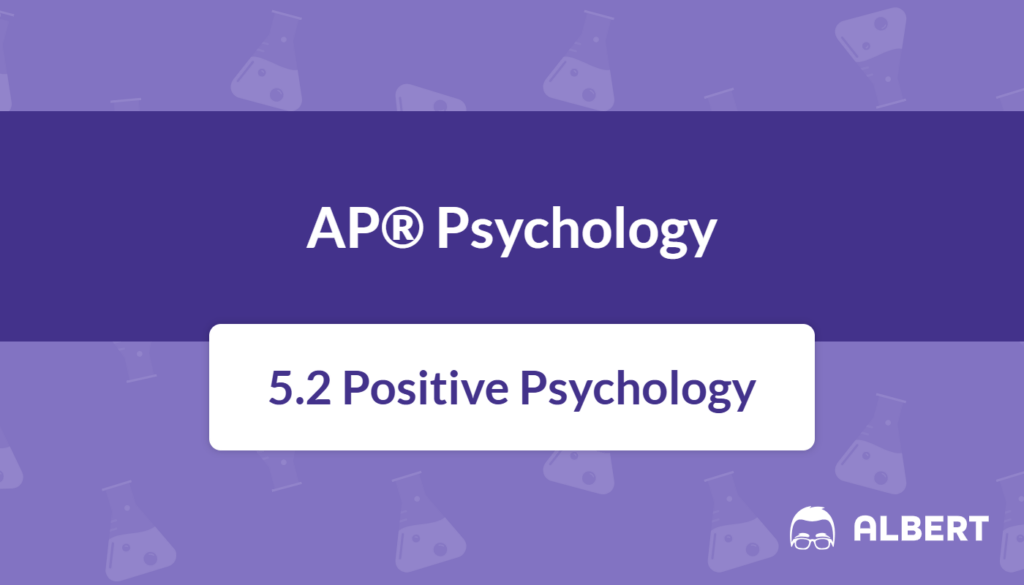What We Review
Positive Psychology Definition: Positive Psychology is the scientific study of the strengths and virtues that help individuals and communities thrive. This area of psychology focuses on understanding what makes life most worth living, rather than only investigating mental illness.
Positive Psychology has become increasingly important. It emphasizes the positive aspects of human experiences and seeks to enhance well-being, resilience, and optimism. Therefore, it looks at how factors like gratitude, happiness, and character strengths improve mental health and create more fulfilling lives. This approach aligns with the idea that psychology should not only treat disorders but also help individuals reach their full potential.
The Foundation of Positive Psychology
Positive Psychology aims to identify factors that lead to well-being, resilience, positive emotions, and psychological health. These factors often include practices such as focusing on one’s strengths, cultivating gratitude, and learning new methods to manage stress.
- Resilience involves bouncing back from challenges and adapting effectively.
- Positive emotions, such as joy and hope, contribute to healthier relationships and stronger coping skills.
Example: Measuring Daily Happiness
Suppose a student rates daily happiness on a scale from 1 to 10. Imagine these scores over five days are 4, 5, 6, 7, and 8.
- Note each day’s happiness score.
- Observe any activities or thoughts on days of higher scores.
- Identify patterns, such as spending time with friends or practicing a hobby.
- Continue to track scores while increasing positive activities.
By day five, the student’s happiness rating might grow from 4 to 8 due to mindful focus on enjoyable activities. This method reflects Positive Psychology’s emphasis on understanding and enhancing well-being.
Practice Problem – Step by Step:
- Let’s say happiness on days 1 through 5 is recorded as H₁ = 4, H₂ = 5, H₃ = 6, H₄ = 7, H₅ = 8.
- Find the average happiness rating: \text{Average} = \frac{H_1 + H_2 + H_3 + H_4 + H_5}{5}
- Calculate step by step: \text{Sum} = 4 + 5 + 6 + 7 + 8 = 30\text{Average} = \frac{30}{5} = 6
- The average daily happiness rating is 6. Compare that to the starting day’s value of 4.
Therefore, after five days, there is a noticeable improvement in the student’s mood, showing how small changes can influence overall happiness.
Positive Subjective Experiences and Their Impact
Positive subjective experiences involve personal emotions and mental states such as gratitude and contentment. They shape behavior by guiding decision-making and influencing self-confidence. According to Positive Psychology, focusing on these uplifting experiences boosts mental processes, making it easier to deal with stress.
Understanding Positive Subjective Experiences
Positive subjective experiences can be as simple as enjoying a walk outside or feeling pride after completing an assignment. They are powerful because they affect:
- Motivation and goal-setting
- Overall sense of life satisfaction
- The quality of social relationships
For instance, feeling appreciated by friends can enhance self-esteem. As a result, daily behaviors become more supportive of emotional health and personal growth.
Expressing Gratitude
Expressing gratitude involves noticing and appreciating the positive things in life. It is linked closely to higher satisfaction and a more optimistic outlook. Gratitude can be practiced through journaling, sharing kind words, or reflecting on supportive relationships.
Step-by-Step Example: Practicing Gratitude Daily
- Choose a fixed time each day to write down three things that went well.
- For each item, describe why it was meaningful.
- At the end of each week, review the entries to see common themes of positivity.
- Notice any improvements in mood or interactions with others.
Consistently expressing gratitude has been shown to increase subjective well-being. Furthermore, it helps foster deeper connections and reduce stress.
Mathematical Illustration: Gratitude and Well-Being
Sometimes, researchers attempt to find simple relationships between gratitude (G) and well-being (W). A linear model might look like this:
W = 2G + 5Practice Problem – Step by Step:
- Suppose a person tracks how many times they express gratitude each day over a week (G). Let G = 3 on a particular day.
- Substitute G = 3 into the equation: W = 2 \times 3 + 5
- Perform the operation: W = 6 + 5 = 11
- If well-being (W) ranges from 0 to 15, a value of 11 indicates a relatively high level of daily well-being.
Therefore, consistently expressing gratitude can raise a person’s sense of satisfaction and positivity.
Utilizing Strengths and Virtues
Strengths and virtues refer to positive traits like kindness and bravery that individuals possess. Positive Psychology classifies these into six categories: wisdom, courage, humanity, justice, temperance, and transcendence.
Focusing on strengths often leads to higher happiness and better performance in various life areas. Therefore, many people find it beneficial to discover their strongest traits and look for ways to use them daily.
Step-by-Step Example: Identifying and Applying Your Strengths
- Make a list of personal qualities that generate confidence or come naturally.
- Ask friends or family for feedback about your greatest attributes.
- Compare the feedback to see if there are common themes.
- Choose one trait to use in a creative way each day. For example, if kindness is a hallmark strength, look for new ways to help classmates or neighbors.
Over time, applying strengths can lead to higher levels of self-esteem and life satisfaction.
Posttraumatic Growth
What is positive psychology’s contribution to trauma recovery? Posttraumatic growth is the ability to experience positive changes after facing significant hardship. This process differs from resilience because it implies not just bouncing back but growing beyond the previous level of functioning.
For instance, individuals may develop deeper compassion, altered priorities, or a stronger sense of purpose after adversity. Therefore, posttraumatic growth is an inspiring example of how the human spirit can transform struggles into personal development.
Step-by-Step Example: Finding Growth After a Traumatic Event
- Reflect on the experience and identify lessons learned.
- Acknowledge the pain but also recognize any inner strengths displayed.
- Seek supportive relationships or professional guidance to reframe the event.
- Make realistic goals to move forward while honoring the growth gained from the hardship.
Over time, the individual may report feeling more empowered or discover a new path in life. This highlights the power of finding meaning in difficult circumstances.
Real-World Applications of Positive Psychology
Positive Psychology can be applied in various settings, including schools, workplaces, and healthcare. In educational environments, teachers often integrate gratitude exercises and character-building tasks to improve classroom morale. Similarly, workplaces might encourage employees to focus on strtheir engths and express appreciation to managers or peers.

Examples of Everyday Applications
- Using a gratitude journal to reduce stress.
- Setting goals based on natural talents.
- Practicing mindfulness or breathing exercises to boost resilience.
- Encouraging supportive group activities in class or at work.
Individuals who apply Positive Psychology regularly may notice an enhanced sense of control and a deeper connection to their communities. Therefore, it can revolutionize perspectives on daily challenges and long-term goals.
Step-by-Step Example: Positive Psychology in a Study Routine
- Select an upcoming test or project.
- Identify a personal strength (e.g., curiosity) to engage in the learning process.
- Write down three aspects of gratitude related to the topic (for instance, “Grateful for a supportive teacher,” “Grateful for access to books”).
- Study with goals that emphasize enjoyment, making the process more motivating.
This technique may transform an ordinary study session into an encouraging and uplifting experience.
Summary of Key Concepts and Vocabulary
Below is a quick reference chart of essential terms and definitions related to Positive Psychology.
| Term | Definition or Key Feature |
| Positive Psychology | The study of strengths and virtues that enable individuals to thrive |
| Well-Being | A general sense of satisfaction and happiness in life |
| Resilience | The ability to recover quickly from challenges or setbacks |
| Positive Emotions | Emotions such as joy, gratitude, and hope |
| Expressing Gratitude | The act of noticing and appreciating the good things in life |
| Strengths and Virtues | Inherent positive traits categorized into six main groups |
| Posttraumatic Growth | Positive changes that arise after experiencing significant adversity |
Use this chart as a convenient reminder of the concepts discussed. Each term highlights an essential part of Positive Psychology.
Conclusion
In summary, Positive Psychology broadens the focus of traditional psychology by emphasizing well-being, resilience, and personal strengths. Its methods include expressing gratitude, discovering and using individual talents, and understanding how positive subjective experiences shape behavior and mental processes. Moreover, the concept of posttraumatic growth demonstrates how adversity can foster remarkable transformations.
These ideas provide powerful ways to cultivate a healthier mindset, one that thrives on recognizing the good in each day and learning from life events—both pleasant and challenging. Therefore, exploring and applying Positive Psychology can lead to a more balanced, purposeful life.
Sharpen Your Skills for AP® Psychology
Are you preparing for the AP® Psychology test? We’ve got you covered! Try our review articles designed to help you confidently tackle real-world AP® Psychology problems. You’ll find everything you need to succeed, from quick tips to detailed strategies. Start exploring now!
- Mental Health Service: AP® Psychology Review
- Mind Body Connection: AP® Psychology Review
- Psychological Evaluation: AP® Psychology Review
Need help preparing for your AP® Psychology exam?
Albert has hundreds of AP® Psychology practice questions, free response, and full-length practice tests to try out.








